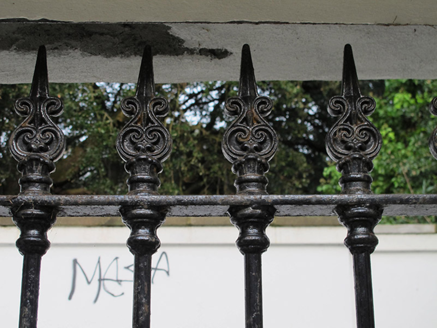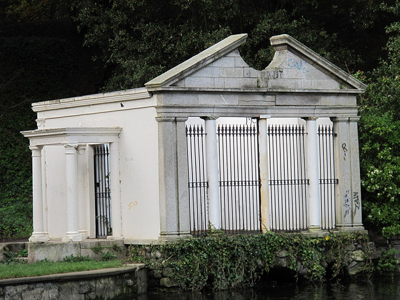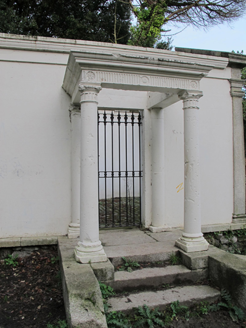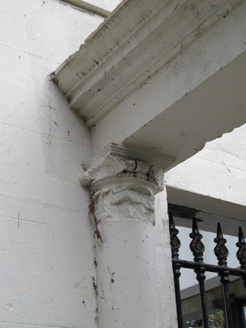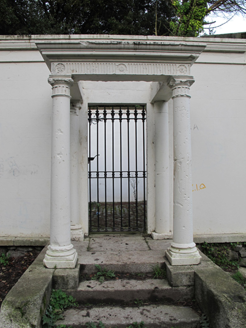Survey Data
Reg No
50030032
Rating
Regional
Categories of Special Interest
Architectural, Artistic
Previous Name
St Anne's
Original Use
Folly
In Use As
Folly
Date
1850 - 1870
Coordinates
321969, 237264
Date Recorded
24/11/2014
Date Updated
--/--/--
Description
Freestanding single-bay single-storey temple folly, built c. 1860, overlooking artificial pond, having carved granite temple front to front (east) elevation and portico to south elevation. Broken pediment to front, supported on painted masonry columns, with recent cast-iron central column added, paired terminating pilasters, and cast-iron railings. Moulded masonry cornice to north, south and rear (west) elevations to lined-and-ruled rendered walls, having render pilasters flanking rear elevation. Square-headed door openings having cast-iron gates. Composite columns to portico to south elevation, with granite platform and steps. Cobbled floor to interior. Rubble stone plinth with segmental- and round-headed arches.
Appraisal
This picturesque temple forms part of an interesting and unusual collection of follies constructed by Benjamin Lee Guinness on St. Ann's estate in the mid-nineteenth century. Along with his brother, Arthur, Benjamin bought Thornhill Estate in 1835, renaming it St. Anne's after the nearby holy well. The estate was considerably expanded by Benjamin and his successor, Arthur Edward Guinness, Lord Ardilaun. Benjamin undertook extensive landscaping work and constructed several classical and rustic follies to enhance the gardens. Temples were seen as dwelling places of the gods in Classical civilisations or ritual spaces, and their inclusion in a garden setting in the nineteenth century was intended to suggest an ethereal connection. This example overlooks an artificial pond, created by Benjamin as part of his landscaping endeavours, and forms an attractive reflection on the water. A high level of stone masonry is evident in the execution of the granite to the front, and the themes are repeated in render pilasters to the rear. It makes a positive contribution to the landscape of St. Anne's Park.
